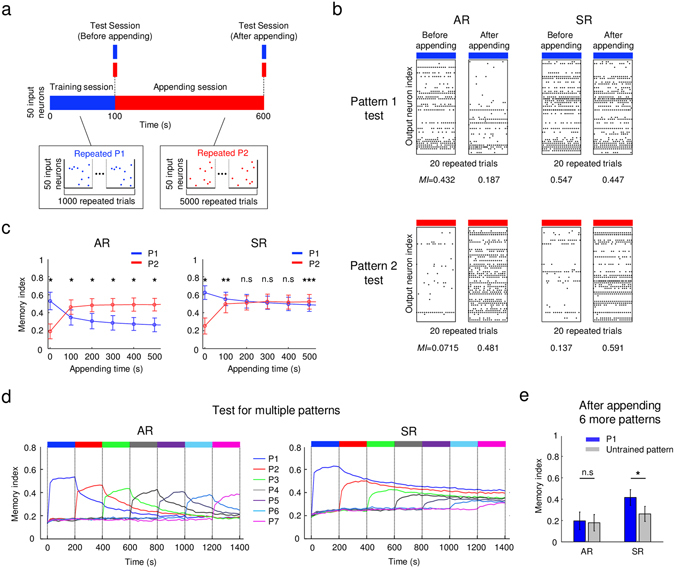Figure 4.

Comparison of AR and SR models for appending new memories: (a) Test scheme for appending memory: After 100 s of training with pattern P1, another input pattern P2 was trained for 500 s to test the ability of each model to append memory, and the memory indices for P1 and P2 were measured before and after each appending session. (b) The response of each model to old and new input patterns: The AR model lost P1 memory after appending P2 (left), while the SR model did not lose P1 memory even after appending new memory (right). (c) Memory index change during appending session: In the AR model, the memory index for the old pattern (P1) decayed fast as the memory of the new pattern (P2) formed. In the SR model, the memory index for P1 slightly decreased but was kept as high as that of the newly formed memory of P2 (Mann-Whitney U-test: *p < 10−16, **p < 10−4, ***p < 0.01, n = 100). (d) Memory index change for appending multiple patterns: Different temporal patterns (P1-P7) were sequentially introduced to the model networks: In the AR model, old memories rapidly decayed as soon as new patterns were introduced. In the SR model, both old memories and new memories were kept together, well above the response level for the untrained inputs. (e) P1 memory index after appending six new patterns. In the AR model, the memory index of P1 was remarkably decreased, indistinguishable from that of an untrained pattern (Mann-Whitney U-test, p = 0.2232, n = 100). On the other hand, in the SR model, the memory index of the P1 after training was still significantly higher than that of an untrained input (Mann-Whitney U-test: *p < 10−16, n = 100). Error bars represent the standard deviation.
